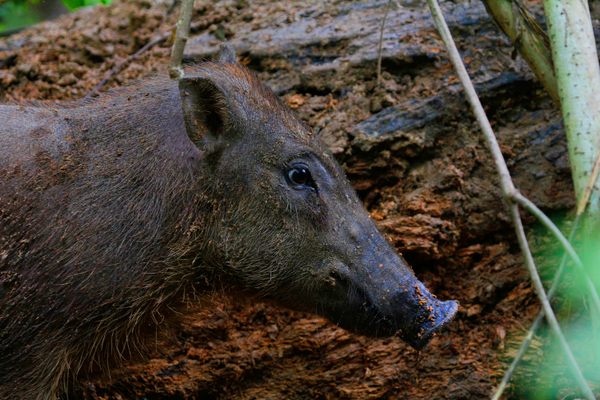Wild Life: Tent-Making Bats
In a preview of our new book, we meet bats that construct tiny abodes of leaves, with built-in security alarms.
Each week, Atlas Obscura is providing a new short excerpt from our upcoming book, Wild Life: An Explorer’s Guide to the World’s Living Wonders (September 17, 2024).
Bats are known jocks, swooping around at high speeds and using echolocation to plunge and veer with pinpoint accuracy.
But some species are also artists—architects, to be precise. In tropical forests across the world, bats are building bespoke tents out of leaves. They’re climate-controlled, provide shelter from the sun and rain, and even rustle when predators are near: a built-in security alarm.
More than 20 species of bat have been found to make tents. Most of them are tiny fruit-eaters who perch in trees—although a few larger types, including some flying foxes, also dabble. A male bat might build a tent during mating season in order to attract females, or a group might collaborate to pitch a family-sized roost. Bats also sometimes camp solo.
Whatever the motivation, construction usually goes the same way: The bat nibbles around a leaf’s veins and stem, weakening it at strategic points until it collapses on itself. Depending on the shape of the leaves involved, and the bat’s particular chewing pattern, a number of different tent styles can result.
Researchers have named at least eight of these—from “bifid,” where two quick cuts cause a leaf to flop into a cabana shape, to “pinnate,” where bats chew adjacent pairs of palm fronds until they form a long, skinny lean-to.
The most prolific builder, the common tent-making bat, can make seven different types of tents. Others specialize in one style, like Prairie-era Frank Lloyd Wrights. Honduran white bats—a Central American species that resembles a cotton ball—only make tents out of the broad leaves of heliconias, shaping them into upside-down boats. Up to 15 bats at a time might huddle inside one, hanging upside down from the leaf’s midrib like a fuzzy chandelier.
Because so many different kinds of bats build tents—including some from entirely different family groups—experts think the skill has evolved multiple times. More practitioners and styles will almost certainly be discovered, perhaps enough to fill a nice coffee table book.
- Range: Central and South America and South and Southeast Asia
- Major species: Common tent-making bat (Uroderma bilobatum), Honduran white bat (Ectophylla alba), Greater short-nosed fruit bat (Cynopterus sphinx)
- How to see them: You can find Honduran white bats at the Tirimbina Rainforest Center in Sarapiqui, Costa Rica.
Wild Life: An Explorer’s Guide to the World’s Living Wonders celebrates hundreds of surprising animals, plants, fungi, microbes, and more, as well as the people around the world who have dedicated their lives to understanding them. Pre-order your copy today!




































Follow us on Twitter to get the latest on the world's hidden wonders.
Like us on Facebook to get the latest on the world's hidden wonders.
Follow us on Twitter Like us on Facebook